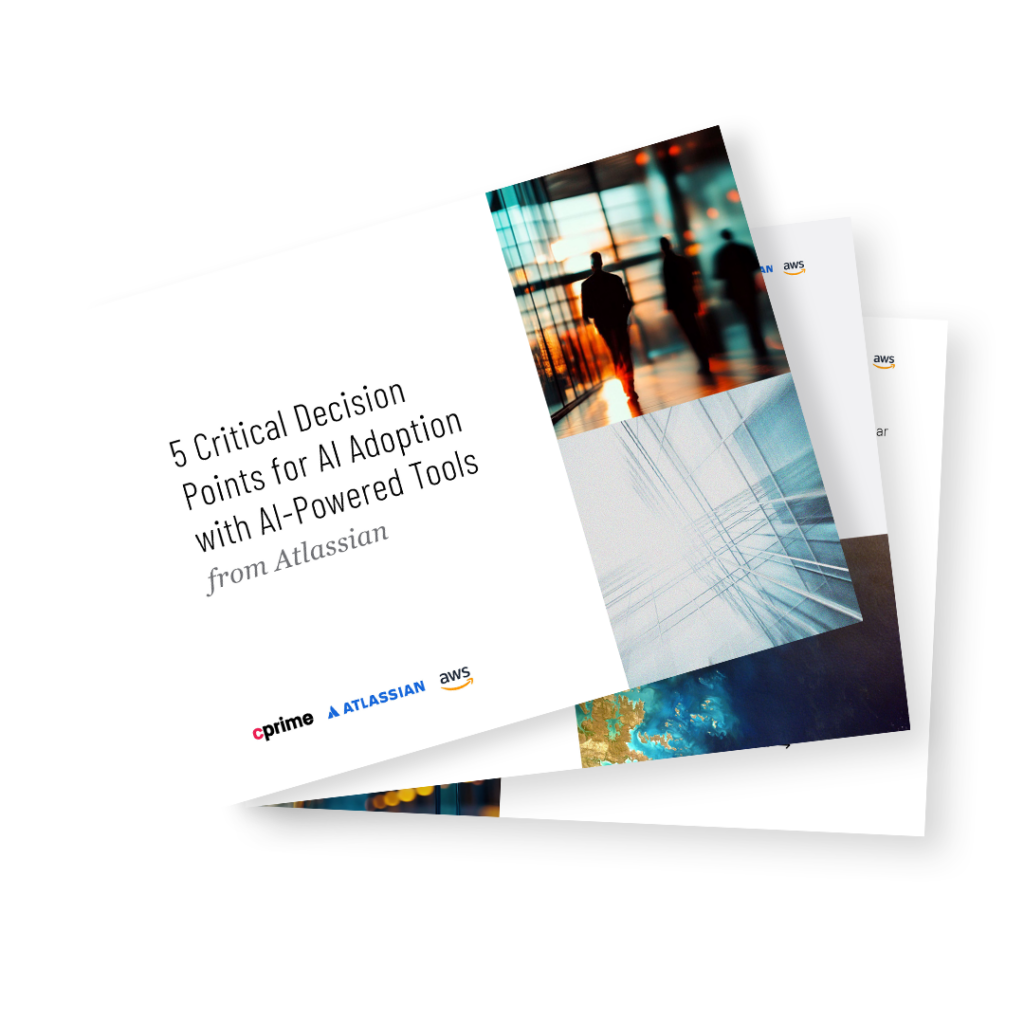

AI is everywhere these days. But your average workday still feels stuck in manual updates, endless meetings, and constant context-switching. It’s time for something better.
So why hasn’t AI yet made a real difference for most teams? One reason is the assumption that doing so requires a complete system overhaul. While that may have been true just a few years ago, that’s no longer the case. Those working in Atlassian can start seeing real results almost immediately. More flow, less friction.
Rovo Agents are a new AI teammate providing generative AI capabilities within Atlassian tools like Jira, Confluence, and Bitbucket. These AI-powered teammates are designed to help teams across every department, from HR to IT to engineering, automate repetitive tasks (e.g., answering common employee questions, triaging support tickets, summarizing meetings) to keep things flowing so teams can dive deeper into strategic work.
“If you’re already working in Jira or Confluence, Rovo Agents are a no-brainer. They’re built into the Atlassian stack and immediately start delivering value where your work already happens.”
Drew Garvey, Agile Tooling Solutions Practice Director, Cprime
In this post, we’ll cover how Rovo Agents work, how teams are using them today, and what steps to take to start seeing results quickly.

Next step: scaling AI.
Rovo Agents are just the beginning. Download our guide to learn how leading teams scale AI across their Atlassian stack.
What Are Atlassian Rovo Agents, and Why Are They Valuable?
Rovo Agents are enterprise AI-powered assistants that uses workflow automation to reduce the “work about work,” by automating tedious tasks. This allows teams to focus on more complex problems, with the average user saving one to two hours weekly Through this no-code workflow automation, you can launch prebuilt agents or build their own to match specific team needs and workflows. Even better, Rovo Agents also integrate with third-party tools like Slack, Asana, GitHub, and Dropbox.
Some ways Rovo Agents help out teams:
- Automate the busywork like ticket triage, meeting summaries, and password resets.
- Function as an enterprise search platform, pulling answers instantly from a unified knowledge base across all your connected tools.
- Keep teams in sync by streamlining handoffs and avoiding duplicate work.
- Customize easily with a low-code setup, allowing for the creation of custom AI agents for business that fit each team’s unique needs.
- Accelerate impact with out-of-the-box use cases for every team.
How Cprime Used Rovo Agents to Transform a Company’s HR Operations
A business services company came to Cprime with an overburdened HR team. Between onboarding, benefits, and policy questions, HR employees were spending 30-40% of their time fielding repetitive requests and tracking down information across scattered systems.
Cprime worked closely with the client to design and launch custom Rovo Virtual Agents trained to handle routine HR service management inquiries. Using Rovo Studio, we shaped each agent’s persona, fine-tuned their scope, and built smart handoff logic to ensure employees always got the right support.
The results were immediate: HR’s workload dropped sharply. Employees quickly noticed faster answers and fewer hassles. The HR team finally had breathing room for strategic projects, demonstrating how rewiring just a few workflows can accelerate productivity across the whole organization.
Real-World Ways Teams are Using Atlassian Rovo Agents
From IT to marketing, here are some ways Rovo Agents can help teams stay focused and get more done.
Tips for Getting Started with Rovo Agents
Rovo Agents are ready to work. Here’s how to help them start delivering value on day one.
- Start with high-impact automations: Target high-volume tasks like automated ticket routing or natural language search queries to quickly demonstrate value and build momentum.
- Build a reliable knowledge base: Rovo pulls from your internal knowledge and tools, so make sure Confluence pages, Jira fields, and other sources are accurate and clearly organized.
- Rally your champions: Tap early adopters to drive usage and reassure teams that agents support, not replace, human work.
- Measure impact: Track key success metrics, like time saved or resolution speed, and use the insights to drive excitement among teams and refine how agents operate.
Bring in experts: A trusted partner like Cprime can help identify the most valuable use cases, tailor custom agents, and scale across teams.
Why Cprime? A Smarter Path to Scalable AI
We’re here to help you launch Rovo Agents quickly, so your team can immediately benefit. And we’ll keep working together to scale that success into broader AI-powered orchestration across your business. Every deployment is tailored to your goals, tools, and ways of working.
With deep experience across industries and functions, we guide you from setup through optimization, ultimately helping your business become truly AI-native.
“Cprime doesn’t just flip a switch and walk away. We get to know the company’s core strategy and priorities to make sure agents are trained, scoped, and continuously improved to support how the business actually runs.”
Drew Garvey, Agile Tooling Solutions Practice Director at Cprime
With Rovo Agents, Cprime helps companies:
- Identify where to start with workshops that connect agent use cases to your team’s biggest needs.
- Design custom agents with hands-on Rovo Studio experience.
- Ensure security and compliance by configuring access, audit trails, and data policies that meet your standards.
- Drive adoption with training and change management that’s tailored to specific roles.
- Keep improving over time by using feedback to fine-tune agents, expand use cases, and boost impact.
Ready to see how Rovo Agents can use workflow automation to make work easier and smarter across your organization?
Book a strategy session today with Cprime and let us build out a plan to start you down the path to AI-native.












